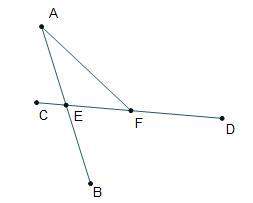Sin(A + B) = sinAcosB + cosAsinB
cos(A + B) = cosAcosB - sinAsinB
If sinA = ⅗ and sinB =...

Mathematics, 29.05.2020 09:58 kleathers97
Sin(A + B) = sinAcosB + cosAsinB
cos(A + B) = cosAcosB - sinAsinB
If sinA = ⅗ and sinB = 5/13 where both angles A & B are in quadrant II. Find sin(A + B).
sinA = ⅗ & cosA = -⅘ and sinB = 5/13 & cosB = -12/13
sin(A + B) = (⅗)(-12/13) + (-⅘)(5/13) = (-36/65) + (-20/65) = -56/65
USING THIS INFORMATION FIND cos(A+B)

Answers: 1


Other questions on the subject: Mathematics


Mathematics, 21.06.2019 23:10, nekathadon
Frank is lending $1,000 to sarah for two years. frank and sarah agree that frank should earn a real return of 4 percent per year. instructions: a. the cpi (times 100) is 100 at the time that frank makes the loan. it is expected to be 113 in one year and 127.7 in two years. what nominal rate of interest should frank charge sarah?
Answers: 3

Mathematics, 22.06.2019 01:00, ashiteru123
Multiply: 2.7 × (–3) × (–1.2). a. –9.72 b. –10.8 c. 10.8 d. 9.72
Answers: 2

Mathematics, 22.06.2019 01:10, girdwood797
|p| > 3 {-3, 3} {p|-3 < p < 3} {p|p < -3 or p > 3}
Answers: 2
You know the right answer?
Questions in other subjects:






Mathematics, 20.07.2020 01:01

English, 20.07.2020 01:01


Mathematics, 20.07.2020 01:01




